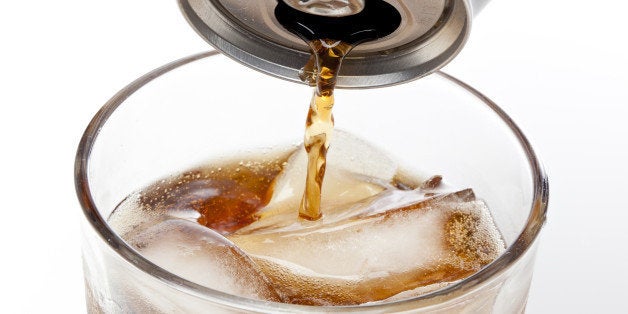
The real question from yesterday: Did Big Soda learn from Election Day 2014? Or is it going to keep falling for its own spin?
Berkeley's voters passed the one-penny-per-ounce soda tax with an overwhelming and resounding 75 percent. In San Francisco, proponents had a much steeper hill to climb -- needing two-thirds to pass a two-penny-per ounce tax -- but they still sent shudders through the executive suites of Big Soda, winning a majority 55 percent of the vote.
Yes, Berkeley is different from Peoria, but not that different. In Alameda County where Berkeley is located, the rate for diabetes is 8 percent and the obesity rate is 21 percent. In Peoria County, the rate for diabetes is 10 percent and the obesity rate is 27 percent.
Communities from Berkeley to Peoria are facing the same epidemics of soda-related diseases, and they are ready to act. In Berkeley and San Francisco, the coalitions supporting the soda tax initiatives were broad-based and deep, reaching well beyond the public health community. Supporters included civil rights groups, unions, the faith community, local legislators, and local restaurants and grocers. A similar broad-based coalition launched a campaign in Illinois earlier this year for a soda tax there and is committed to trying again next year.
All Americans get it: Drinking soda morning, noon, and night isn't a recipe for happiness. It's a prescription for diabetes, obesity, and tooth decay.
In Berkeley and San Francisco, Big Soda responded as it always has: spending millions of dollars to create pseudo-community coalitions (even moving one of its flacks to Berkeley who then tried to derail the community's efforts with a lawsuit) and literally plastering the communities with its advertising. In addition, with more than a teaspoon of cynicism, Coke, Pepsi, and Dr Pepper Snapple Group announced a month before the elections that they are committed to reducing per capita calories from soda by 20 percent by 2015. In their self-congratulatory press release, the Big Soda companies forgot to mention that, in fact, Big Soda suffered a 20 percent decline in consumption of their sugary drinks over the last decade so the "bold" announcement is little more than business as usual.
Big Soda's PR machine can spin all it wants about Berkeley's being out of step with the rest of the country, but it's the industry that's out of step.
The public's understanding of the link between excessive consumption of soda and the illnesses associated with soda is growing. In July, the Gallup Poll reported that 63 percent of Americans say they are actively avoiding drinking soda. That is up an astounding 22 percentage points from when Gallup asked the question in July 2002. As Gallup also pointed out, only 13 percent reported not thinking about their soda consumption, and that is a significant decline from the 24 percent who said that in 2002.
Many factors are contributing to increased public concern about sugar drinks -- and decreased consumption. First, the scientific evidence showing that sugar drinks promote obesity has become far more solid. Local health departments across the country have run hard-hitting and effective public service campaigns about the harmful health effects of drinking soda. (Imagine if those local health departments had one-tenth of Big Soda's advertising budget to put behind their PSA campaigns). Hospitals are removing sugary drinks from their cafeterias because they realize the indefensible incongruity of these products with their health mission. Big Soda's big-brother-like presence in schools has ended. More and more cities and states are kicking soda off of government-owned properties. And sales of bottled water have soared. Taken together, each of these initiatives is changing our social norms. While Big Soda's continued advertising and promotion is far from being the little boy at the dike, the cracks are appearing. In fact, per capita of consumption of carbonated sugar drinks has dropped by 25 percent over the past 15 years.
Berkeley is one, and there will be others. Now is the time for the public health community to learn the real lessons from Berkeley. Reach out and across your local community and build deep and wide coalitions. Continue to invest in education campaigns about the health harms of sugary drinks to your families and children. Be ready to respond aggressively and truthfully to Big Soda's misstatements and misrepresentations.
Even Big Soda's San Francisco "victory" will eventually be seen as pyrrhic. As one advocate in San Francisco said Tuesday morning:
Regardless of the vote outcome, we have already won! The amount of discussion we raised was incredible! We got over 108 non-profits, democratic clubs, PTAs, the school board, ALL the local papers including our big moderate paper -- The SF Chronicle that opposed Richmond's tax -- many elected officials both local and statewide, food access groups, hospital councils, and more to endorse! The Food Bank changed their policy about receiving and donating sugary drinks affecting many hundreds of thousands of people, the YMCA changed their food and beverage policies, and MORE!
The times, they are a-changin'.